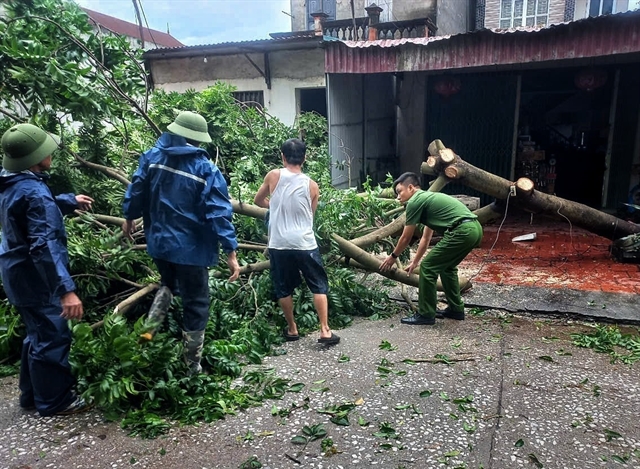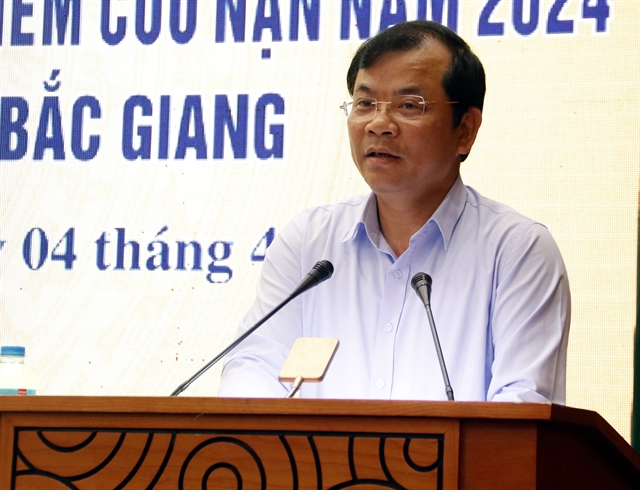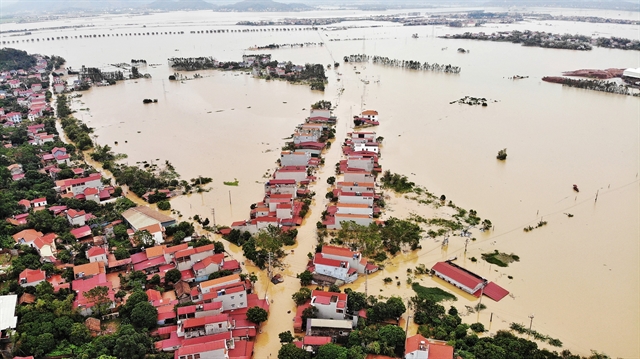 Society
Society


|
| Police help local residents in Bắc Giang City in Bắc Giang Province after Typhoon Yagi.— Photos courtesy of the Provincial People's Committee |
BẮC GIANG — Bắc Giang Province must accelerate the application of scientific and technological advances to its disaster prevention, response and search and rescue efforts this year.
The directives came from Phan Thế Tuấn, Deputy Chairman of the Provincial People’s Committee, at a recent conference held by the committee to assign tasks for this year's disaster prevention and search and rescue work.
Specifically, Tuấn said the province should replace its manual rainfall, water level and temperature measurements with automated systems; issue hazardous weather warnings based on satellite cloud imagery; and exploit multiple information channels, including newspapers, radio broadcasts, television, websites, Facebook, email and SMS, to disseminate reports, forecasts, alerts and practical guidance on disaster preparedness and response.

|
| Deputy Chairman of the Provincial People’s Committee Phan Thế Tuấn delivers his speech at the conference. |
Tuấn said that agencies and local authorities must adopt proactive measures, cultivate a strong sense of responsibility and remain agile in both prevention and response in order to excel in disaster prevention and rescue.
Units and localities should creatively and effectively apply the “four on the spot” principle of command, forces, materials and logistics, tailored to their own circumstances.
Stakeholders must draw up plans for flood control across the province’s dike systems, drainage networks and low lying riverine areas, while regularly inspecting the condition of flood prevention works.
They should pay particular attention to vulnerable points at high risk, especially dikes, dams and the drainage systems serving industrial zones.
Irrigation projects already under construction must be expedited and completed before the onset of the rainy season.
Commune-level People’s Committees must continue inspecting and prosecuting any violations of flood prevention, irrigation and disaster prevention regulations, and ensure that resources, equipment and personnel are in place to respond swiftly to emergencies, especially in remote areas during severe weather.
They should also strengthen coordination with military and police units to mount joint disaster response operations.

|
| Yên Trí Commune in Bắc Giang Province inundated by floods triggered by Typhoon Yagi in September 2024. |
Bùi Thị Thu Hiền, Director of the province’s Meteorological and Hydrological Station, warned that this season is forecast to bring complex weather and hydrological conditions, with numerous natural hazards and extreme events.
The province will likely be hit by up to twelve storm events with moderate to heavy rainfall.
Peak river flows are expected in July and August, though they are forecast to be lower than those recorded last year.
The province was directly hit by Typhoon Prapiroon, which brought torrential rains, thunderstorms and strong winds last year.
Typhoon Yagi also hit the area last year, causing three fatalities, 18 injuries and severe damage, including 8,180 homes damaged or destroyed; nearly 3,000ha of crops devastated; almost 32,000ha of forest felled; and damaging 104 flood prevention structures.
Economic losses from natural disasters last year were estimated at over VNĐ5.1 trillion (US$195.6 million), with overall human and infrastructure damage higher than in 2023.
However, thanks to early and far reaching preparedness, the provincial leadership’s timely and effective direction ensured the safety of most lives and property during the 2024 disasters.
Nonetheless, disaster prevention efforts in the province still face challenges.
Many irrigation and flood prevention infrastructures revealed weaknesses in heavy rainfall, flooding or deep inundation events.
Meanwhile, there is no detailed flash flood warning map down to the village level, and equipment for disaster response and search and rescue efforts remains inadequate, Hiền said.— VNS




